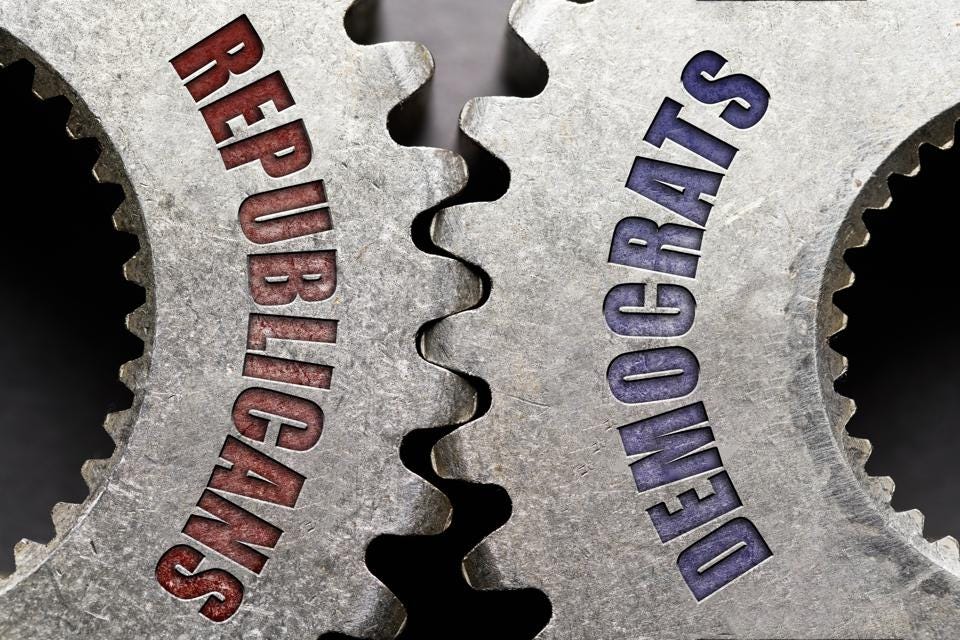By John C. Goodman
Originally posted at Forbes, August 2016
Given the increasing polarization of American politics, readers may be pleasantly surprised to learn there are some public policy alternatives where the left and right seem to agree.
An example is called “auto enrollment.” When workers are hired these days – especially at a large company – odds are they won’t be asked if they want to join the company’s 401(k) plan. Instead, they will be automatically enrolled. If they don’t like that fact, they can walk down to the HR department and opt out.
Studies show that auto enrollment makes a big difference in whether employees participate in a retirement plan and how they participate – particularly low-income employees. Left to their own devices, far too many people make three mistakes: (1) they don’t join their company plan, or (2) if they do join, they don’t contribute enough – leaving employer matching dollars on the table — or (3) they invest too conservatively (e.g., government securities – with no risk, but very little return) or allow themselves to be defaulted into money market funds.
A little over a decade ago, Peter Orszag (then at the Brookings Institution) asked me to help him make it easy for employers to automatically enroll employees into 401(k) plans with diversified portfolios. With additional help from Gov. Pete du Pont, we put together a series of left-right-coming-together briefings on Capitol Hill. The result was a provision in the Pension Protect Act of 2006, giving employers a safe harbor against lawsuits if an employee’s portfolio declines when the market goes down.
Not long after that success, I attended a meeting at Brookings that included folks from the Heritage Foundation. The question: could we extend the auto enrollment idea to small companies that had no retirement plan? The answer appears to be yes.
California is about to become the first state to require employers without a 401(k) plan to auto enroll their employees in a plan managed by the state. Initially, employers must deduct at least 3% of wages for this purpose and they may increase the contribution by 1 percentage point a year until they reach 10 percent. Again, if employees don’t like it they can opt not to participate.
The Wall Street Journal editorial page reports that similar programs are underway in Connecticut, Illinois, Maryland and Oregon. Ironically, these mostly Democratic states seem dead set on turning workers into capitalists!
The idea can also apply to health care if Sen. Bill Cassidy (R-LA) has his way. Last year, Cassidy introduced an alternative to Obamacare that would allow states to automatically enroll people in slimmed down health insurance plans – where the premium is paid by a federal tax credit. For example, a state could connect auto enrollment in a health plan to the receipt of Food Stamps or rent vouchers or basic welfare. The concept was incorporated this year in a health reform bill cosponsored by Cassidy and House Rules Committee Chairman, Pete Sessions (R-TX).
So what can go wrong? Any time politicians have control of a retirement system, there is a lot that can go wrong – witness the $32 trillion dollar unfunded liability in Social Security and another $1 trillion in state pensions. To prevent these and other mishaps, designers should pay attention to four rules.
Life cycle investing. Virtually every disinterested financial planner will give you this advice. If you are an unsophisticated investor, don’t try to pick winners and losers. Instead, invest in an index fund that reflects the market as a whole. If you are young, invest in equities. I don’t think there has ever been a ten-year period when stocks have not outperformed bonds and when corporate bonds have not outperformed government securities. As you near retirement and your planning horizon shortens, it makes sense to reduce your risk. Shift more of your portfolio to bonds and eventually (during retirement, for example) to government bonds or to an annuity backed by government bonds.
This should happen automatically, on the worker’s behalf. California, however, is starting out on the wrong foot from day one. The New York Times reports that the state plans to start out investing all the funds in government securities that promise little or no return.
No politics. There should be no politically imposed restrictions on how retirement funds are invested. The pressure (especially in California) will be to impose constraints: no investment in tobacco, nuclear energy, coal, and so on. In the past there has been no evidence that “socially responsible” investing has had any effect on stock prices. But in the future it might. That means retirees would have to accept a lower standard of living just to satisfy someone’s political agenda. It will be interesting to see if California can resist this temptation.
Property rights. Another bad idea embedded in the new California law would allow the fund managers to siphon off funds from the accounts in good times in order to supplement the accounts when the market is down. This type of spread-the-wealth, investor-based socialism is completely inconsistent with the very idea of a private retirement account. Even worse is the prospect that funds siphoned off might be used to benefit people who don’t even have an account.
No unfunded promises. In California, public funds are being used to jumpstart the venture, and the Wall Street Journal warns of the danger of a government bailout if the accounts don’t grow as predicted.
Auto enrollment is an idea whose time has come. It can work if politicians keep their hands off the investments and resist the natural temptation to tell everyone what to do.
This article was originally posted at Forbes on August 30, 2016.

0 Comments